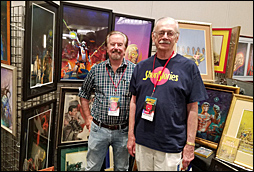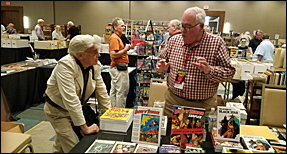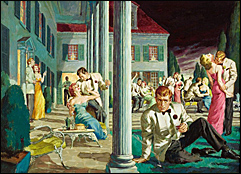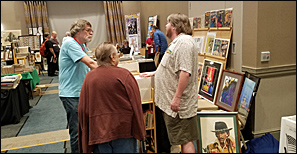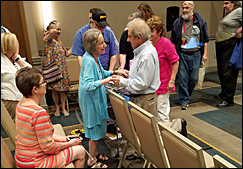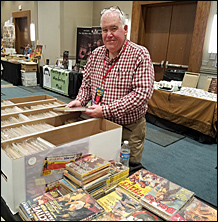FIRST YOU READ, THEN YOU WRITE
by Francis M. Nevins

Remember MGM-TV’s THE MAN FROM U.N.C.L.E.? It was one of the most successful of the many quasi-spy series that flooded prime time in the wake of the early James Bond movies. The stars were Robert Vaughn as Napoleon Solo and David McCallum as Illya Kuryakin, with Leo G. Carroll as their boss, Alexander Waverly. The series ran for four seasons (1964-68), the first in black-and white and the remaining three in color.
I began law school at around the time U.N.C.L.E. debuted but, despite a grueling study schedule, managed to catch most of the first season’s episodes, which were reasonably serious with lots of action. Once the series switched to color it also switched to spoofery and camp. I stopped watching.

But millions stuck with Solo and Illya, and once the ratings showed that U.N.C.L.E. was a hit, MGM-TV commissioned a series of tie-in novels, 23 in all, the first of which was written by Michael Avallone (1924-1999). I had no interest in junk paperbacks but in 1970, when I moved to East Brunswick, New Jersey and was working as a Legal Aid attorney, I discovered that my apartment was only a few blocks from Avallone’s house and called him.
That was the beginning of a weird off-and-on relationship that lasted till his death. Before becoming a neighbor of his I had known very little about him, but after we met I began to collect his books, of which there were dozens. Many of them were movie or TV tie-in novels for which he was paid around $2,000 apiece and which he ground out on his smoking typewriter in a few days or a week. I don’t recall reading any of these, but I did get him to sign them and squirreled them away.

After my wife died and I moved into a condo, I segregated all the tie-in books and put them into a cabinet with sliding doors which were generally kept closed. A couple of months ago I happened to open one of those doors and, since the books were arranged alphabetically by author, discovered a bunch of Avallone that I’d never read, including that MAN FROM U.N.C.L.E. novel and two tie-ins from the unsuccessful spin-off series THE GIRL FROM U.N.C.L.E. (1967-68), which starred Stefanie Powers as April Dancer and Noel Harrison as Mark Slate. I decided it was time to tackle the trio.
Avallone’s great contribution to pop culture was the Avalloneism. You can’t pick up any of his 200-odd books without finding yourself awash in lines you’d swear couldn’t possibly have been published. But they were. Thousands of them. Small wonder that I soon began to think of Avallone as the Ed Wood of the written word. These three tie-in books offer further proof that my name for him was not off the mark.
In THE THOUSAND COFFINS AFFAIR (Ace pb #G-553, 1965) Solo and Illya fly to a remote German village to find out what diabolical device killed an U.N.C.L.E. scientist while in his tub and why, just before dying, he put on his clothes backwards.

It’s no surprise that the culprit is a minion of the evil agency THRUSH, a villain called Golgotha who comes straight out of the Weird Menace pulps of Avallone’s teens. Solo solves the puzzle when he remembers that the dead man was a mystery nut with a particular fondness for Ellery Queen—and that one of the best known Queen novels, THE CHINESE ORANGE MYSTERY (1934), had to do with a corpse who was also dressed backwards.
Someone, quite possibly Avallone himself, called the book to the attention of Fred Dannay, who was half of the Ellery Queen collaboration and the closest to a grandfather I’ve ever known. A number of years after the incident Fred told me that he’d been furious with Avallone for having given away the raison d’être of the CHINESE ORANGE puzzle. But Avallone couldn’t understand what the fuss was about. Hadn’t he promoted Queen? In a paperback that sold a gazillion copies, hadn’t he plugged one of the most famous EQ titles?
Whether the book really sold that well remains a mystery. In later years Avallone publicly accused the publisher of having cheated him out of huge royalties. The name in the copyright notice is MGM-TV, and most likely he wrote it as a work made for hire, earning a flat fee and no more. In any event Ace had nothing more to do with him. But a year later, when MGM-TV launched the GIRL FROM U.N.C.L.E. series and made a tie-in book deal with another publisher, it was Avallone who was tapped to write the first two entries, the only ones that appeared in the U.S. although three more came out in England.
More than half a century has passed between the time Avallone’s contributions to the U.N.C.L.E. saga appeared and the time I pulled them out of my sliding-doored cabinet and read them. I was not disappointed.
First let’s take THE THOUSAND COFFINS AFFAIR, which should have won an Edgar had there been such an award for largest number of words misspelled. In a mere 160 pages we encounter such gems as propellor, esconced, earthern (twice!), jodphurs and cemetary. We are also treated to butchered German locutions like dumbkopf, Vast ist?, Seig heil! and nicht yahr.
Illya’s patronymic or middle name, never given in the TV series, is rendered as Nickovetch, which is gibberish. (The genuine Russian name closest to Avallone’s invention is Nicolaievitch, which I happen to know only because it was the patronymic or middle name of Tolstoy.) And there’s hardly a page without at least one juicy Avalloneism. I will show mercy and offer only a handful, complete with page references.
There was something damnedably odd— (19)
The mechanized bug shot over the road, whipping like the mechanical rabbit at a quinella. (41)
Stewart Fromes’ ten stiff naked toes wore no shoes. (57)
Jerry Terry said “Oh!†and that was all. For Napoleon Solo, it said it all. Oh, indeed. (82)
Like a dead fish, Solo’s right arm fell to his side. (100)
The unexpected was always likely to happen when you least expected it. (140)

When we turn to the second and third of Avallone’s contributions to the saga we find more of the same. THE GIRL FROM U.N.C.L.E. #1: THE BIRDS OF A FEATHER AFFAIR (Signet pb #D3012, 1966) not only recycles some of the misspellings like propellor and esconced, it describes one of the bad guys as both a Hindu and a Sikh.
On one page he’s killed by a bullet in the back of the neck and on the very next page we are told that “[b]lood from his blasted skull dripped to the floor.†As if those gaffes weren’t enough, Stefanie Powers’ first name is spelled wrong on the front cover. (That one we have to chalk up to Signet.)
Storywise it’s typical Avallone, with first Slate and then Dancer kidnapped by THRUSH in a plot to swap them for a top enemy scientist, who claims to have discovered the secret of eternal life and is being held at U.N.C.L.E. headquarters. It turns out that the scientist has an identical double who’s operating as a mole inside the good guys’ stronghold but no one in U.N.C.L.E. suspects they might be twin brothers as in fact they are.
At one point while April Dancer is being held prisoner, a THRUSH man relieves her of “her handbag, personal effects, and even her bra (without having had to undress her).†Neat trick if you can pull it off!
Of Avalloneisms the book has no shortage. This time I’ll limit myself to five.
Noise echoed around the room, gobbling up echoes. (20)
“You’re a fool,†the redhead hissed. (23)
His kindly brown eyes were unaccustomably grim. (69)
Her bra, taut from immersion, was strangling her breasts. (72)
The whipsaw wore a long green velvet dress. (80)
Tugs and seagoing freighters mooed like enormous cows in the harbor. (103)
Whoops! Was that six? Just goes to show that quoting from Avallone is habit-forming.

THE GIRL FROM U.N.C.L.E. #2: THE BLAZING AFFAIR (Signet pb #D3042, 1966), in which Stefanie Powers’ name is again misspelled on the front cover, pits our heroic agents against an organization calling itself TORCH and described on the back cover as “so fantastically evil it puts THRUSH to shame!â€
April begins by foiling an assassination plot in the Ruritanian kingdom of Ostarkia, then joins Slate in Budapest before the two of them go on to Johannesburg on the trail of a TORCH scheme to fund its plans for world domination with South African diamonds. There seem to be fewer Avalloneisms this time around, but those that survived the Signet editorial process, such as it was, are choice.
Kurt’s beady eyes roved between them, not sure what they were talking about, not certain as to exactly what to do next. (59)
The colt in the chair was straining at the leash now. (69)
The man with the withered face frowned a frownless frown. (71)
Like so many little men wanting to be bigger than they ever really were in the first place. (126)
In case I’ve whetted your appetite and you’re determined to read more of these cubic zirconia without visiting your shelves or a secondhand bookstore, I’ve put together a much more extensive catalogue from the trilogy, again complete with page references, which I’ve provided because I wouldn’t want anyone to think I’m making this stuff up. You’ll find the bonanza of boners by clicking HERE. Don’t say I didn’t warn you!

